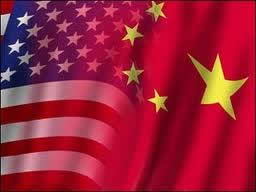The New US-Chinese Globalization Opportunity
Politics / GeoPolitics Nov 17, 2017 - 12:59 PM GMTBy: Dan_Steinbock
 While US postwar policies in Asia are shifting, a new Sino-US historical opportunity has emerged. US and Chinese visions of globalization could still prove complementary.
While US postwar policies in Asia are shifting, a new Sino-US historical opportunity has emerged. US and Chinese visions of globalization could still prove complementary.
President Trump’s grueling 12-day Asia tour took place amid a worrisome historical moment. Since the mid-2010s, global economic integration - as measured by trade, investment and migration - has come to a standstill. Trade has been falling. Investment continues to stagnate. And slower migration has given rise to elevated global displacement and refugee crises - the worst since 1945.
 After Japan, South Korea, China and Vietnam, Trump attended the Asia Pacific Economic Cooperation (APEC) Summit in Da Nang, Vietnam, followed by the 50th Anniversary of ASEAN in Manila.
After Japan, South Korea, China and Vietnam, Trump attended the Asia Pacific Economic Cooperation (APEC) Summit in Da Nang, Vietnam, followed by the 50th Anniversary of ASEAN in Manila.It was the two leaders’ speeches in the Vietnam that seemed to leave room for an emerging opportunity – a new kind of globalization.
Competing views – only part of the story
In a defiant address, President Trump told the APEC meeting that the US would no longer tolerate "chronic trade abuses.” In turn, President Xi announced that globalization was irreversible.
In his speech, Trump complained about trade imbalances, arguing that America had lowered market barriers and ended tariffs, whereas other countries had not responded in kind. “Such practices hurt many people in our country,” he lamented.
Trump believed that those Bretton Woods multilateral organizations that America had created in the postwar era have become dysfunctional. So he railed against the World Trade Organization (WTO), which sets global trade laws, claiming that it "cannot function properly" if all members do not respect the rules.
Speaking right after his US counterpart, Chinese President Xi Jinping gave a strong address about the benefits world trade. Unlike Trump, Xi defended multilateral trade deals, which can help poorer nations to benefit: “"We should support the multilateral trading regime and practice open regionalism to allow developing members to benefit more from international trade and investment.”
Yet, neither leader has illusions about pure free trade ideals in which markets would be self-disciplinary and which thus would only generate winners.
“Globalization is an “irreversible historical trend,” Xi noted. Yet, he argued that the philosophy behind free trade must be repurposed to be "more open, more balanced, more equitable and more beneficial to all".
The great opportunity
Unsurprisingly, most Western media headlined the APEC Summit with the startling contrast: “Trump and Xi offer competing visions for trade.” What got lost in the translation was the intriguing fact – and historical opportunity – that the Trump and Xi visions need not be seen as exclusive.
In fact, both the US and Chinese visions support globalization, but with caveats. Both criticize the old multilateral international banks, though for different reasons. Both believe in rebalancing that is not accompanied by excessive trade deficits and foreign investment that should benefit both investors and destinations.
As aging advanced economies suffer from secular stagnation, they can no longer fuel world trade, investment and migration as vigorously as before. That’s reflected by Trump’s pessimistic narrative of a globalization victim.
Yet, the global economy is also amid a secular transition that is characterized by increasing South-to-South trade, investment and migration, which are now fueled by emerging and developing nations. And that’s reflected by Xi’s more optimistic narrative of a globalization champion. The big picture includes both narratives.
In the 21st century, the international environment that fuels global economic integration is shifting dramatically. While globalization was initiated by advanced economies in the 20th century, it will be completed by emerging economies in the 21st century. At the same time, the drivers of globalization are moving from the transatlantic axis to Asia.
It is thus not the competitive US-China visions that will lead to a destructive conflict in Asia Pacific. Rather, it is the inherent commonalities in the Sino-US approaches that have potential to sustain economic cooperation in the region – and globally.
Dr Steinbock is the founder of the Difference Group and has served as the research director at the India, China, and America Institute (USA) and a visiting fellow at the Shanghai Institutes for International Studies (China) and the EU Center (Singapore). For more information, see http://www.differencegroup.net/
© 2017 Copyright Dan Steinbock - All Rights Reserved
Disclaimer: The above is a matter of opinion provided for general information purposes only and is not intended as investment advice. Information and analysis above are derived from sources and utilising methods believed to be reliable, but we cannot accept responsibility for any losses you may incur as a result of this analysis. Individuals should consult with their personal financial advisors.
© 2005-2022 http://www.MarketOracle.co.uk - The Market Oracle is a FREE Daily Financial Markets Analysis & Forecasting online publication.


